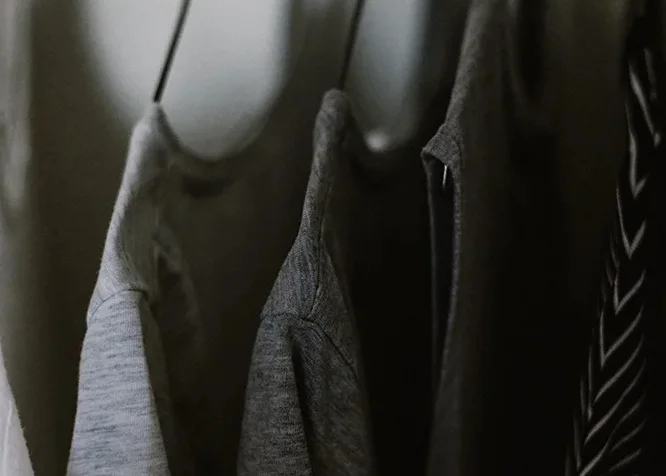The change of season from winter to spring is the time when image consultants have to build stylish and practical wardrobes to gear their clients up for the mild temperatures. It is relevant that image consultants choose the best fabrics for transitional weather and create smart combinations of layered outfits. From the thickness to the color of the clothes, each fabric has its own characteristics that make it more or less suitable to wear in the warmer weather.
STYiLES advises image consultants to consider two fundamental aspects when selecting convenient clothing for transitional weather: the fabric and the color. Light-colored and breathable clothes are the key garments for this time of the year. If image consultants pick up the right fabric with designs that are chic and elegant, the combination becomes infallible. That is why image consultants need to get the most fashionable and comfortable shirts, sweaters, jackets and pants for their clients. Above all, those clothes should be made of high-end fabrics like cotton or linen, which will make anyone look polished.
7 SUITABLE FABRICS FOR TRANSITIONAL WEATHER
The fabrics that are really natural and breathable are the ones that all experts recommend for the mild weather. Cotton and linen are some of the fabrics that keep the body warm while letting the skin breathe and are more pleasant to the touch. When the temperatures start getting warmer in March, the best fabrics to wear are always those made of natural fibers such as cotton, linen or silk, which allow air to circulate.
1. Cotton
Cotton is the natural fiber par excellence and the most classic. It is soft, light to the touch, comfortable and breathable. This means that air circulates and moves freely through the fabric and allows sweat to dry. Cotton is one of the most common and used fabrics today, but not all of them are of good quality. If you find a clothing item made with high-quality cotton, you will notice that it absorbs moisture and helps you maintain the body temperature balanced because it protects both from the cold and the heat.
2. Linen
Linen is one of the most fashionable fabrics and a must to wear in transitional weather from winter to spring, mainly because it is very comfortable and light. In addition, the clothes will stay dry and will not stick to your body since it only absorbs 20 % of moisture. Despite the fact that it wrinkles easily, it is light and malleable and does not adhere to the body.
3. Tropical wool
Tropical wool is a lightweight fabric made of worsted wool with a thinner thread. It is a popular fabric in spring and summer because it is very breathable. One of its benefits is that it does not have a tendency to wrinkle. The most common colors of this fabric are gray and blue. Tropic wool is an amazing fabric to make suits, blazers and shirts.
4. Chambray
Chambray is a plain weave cotton fabric that is typically light blue in color. It is a popular fabric made from cotton which has similar properties to denim and, indeed, is perfect to replace jeans in the warmer months because it is way finer and softer than actual denim. It will help you achieve the effect of denim but with much more perspiration and sophistication.
5. Seersucker
The seersucker is a type of fabric similar to cotton, with a peculiar “wrinkled” effect that is generated because of a particular way of weaving the threads. The most common version of this fabric is made of blue and white stripes, although there are other combinations that are quite successful like green and white. Due to its peculiar geometry, it does not stick to the skin and it allows perspiration. It can be used in various types of clothing: pants, jackets, shirts…
6. Lyocell
It is a natural fiber of vegetable origin which is obtained from the pulp of eucalyptus wood in a totally ecological process. It has a lot of softness and a very pleasant, silky touch. Lyocell offers great strength, high durability and elasticity. It regulates body temperature, absorbs moisture and dries quickly. It is more resistant than cotton and it does not wrinkle easily.
7. Viscose
This fabric is elegant and delicate because it is made by purifying the cellulose fibers that are extracted from the pulp of different types of wood like eucalyptus and bamboo, among others. Viscose fabric is comfortable, soft and versatile. For this reason, it is used in various types of clothing. Also, it is light and allows perspiration and it has a good texture, which is great to make ties and other elegant items. Its colors and patterns are varied and striking, since it can be dyed very easily.
4 FABRICS TO AVOID IN TRANSITIONAL WEATHER
We recommend image consultants to avoid choosing synthetic fabrics such as nylon, acrylic or polyester. These fabrics are less appropriate for the transitional weather, especially for the clients who have a tendency to sweat because they are not as breathable as natural fabrics.
1. Polyester: A synthetic fabric that does not absorb moisture or sweat and does not perspire.
2. Nylon: An elastic and resistant synthetic fiber that can cause chafing and has very little breathability.
3. Acrylic: Synthetic fiber that shrinks easily and that increases the body’s temperature.
4. Leatherette: A thick, heavy and not breathable synthetic fabric that is commonly used to replace leather.

